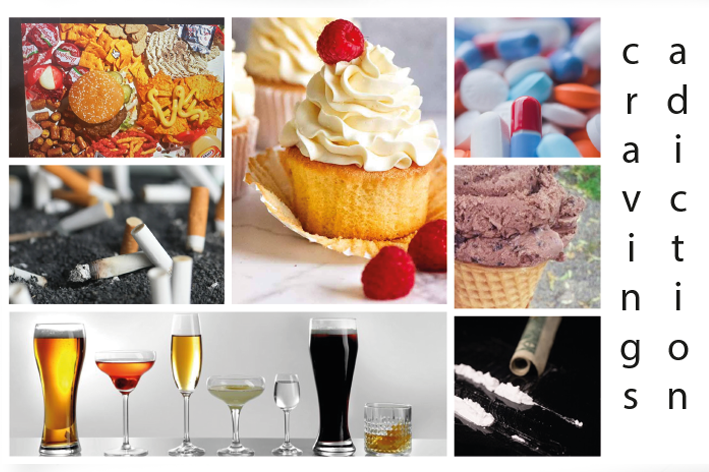“Dopamine; the double edged sword”
Dopamine; the double edged sword
Why do we want things?
A simple question with a very complex answer; an answer which gives us insight into addiction and cravings, as well as motivation and discipline. Every personal trainer will have to deal with these things when working with a client. Every craving that we have, from food and alcohol to cigarettes and drugs, is driven by our dopamine circuits. Understanding how these work, and how to use them to our advantage, is key to breaking bad habits and developing good ones.
A quick primer on dopamine: everybody knows that it is a feel-good hormone, the chemical that creates the sensation of pleasure. I want to start with some interesting stuff on how it works, because this will unlock some easy methods of building habits. Take food as a good example. Normally, eating food increases our dopamine levels. Eating food that we really like increases it more, especially if that food is high in fat and sugar (like most Glasgow cuisine). What you may not know is that even thinking about food causes similar dopamine release. If you think about ice-cream, your brain automatically begins warming up those dopamine circuits; this is what we feel as anticipation, or excitement.
When you eat food that you are excited about, the dopamine release is much higher than if you just ate the food. Eating feels better if we are looking forward to it. We get the same effect with almost everything – the anticipation makes it feel better when we finally get whatever we are excited about. This means that, if we can get excited about things that are good for us, they’ll feel much better when we achieve them.
That’s the good news – the bad news is that dopamine is not just responsible for pleasure. Dopamine also creates cravings. When you eat something nice, you may feel the deep-rooted sensation of wanting another one. Try it with a cake (and we all know how many lovely bakeries Southside has), and you’ll find that your subconscious mind wants you to eat a second one. You might start rationalising it, making excuses for yourself so that you can indulge those dopamine circuits. They are very, very powerful – and the cravings that dopamine creates is one of our worst enemies in the quest for moderation. If you have ever eaten or drank until you feel sick, then you know what it feels like to be enslaved by your dopamine circuits. It feels good, but it also feels terrible.
Anybody who smokes can attest that smoking is not that nice – a smoker does not seek out the mildly stimulating nicotine rush. They want the craving to go away. Because dopamine payout diminishes over time, the thing that you enjoy gradually stops being pleasurable. The craving, however, only gets stronger. You get less pleasure, and more pain, the more you do something. Smoke forty a day (more common than you’d think, especially in Glasgow), and you probably won’t even feel the nicotine rush anymore. You will only feel the craving, which is akin to physical pain. If you have ever missed somebody so much that it hurts, then you know how painful a craving can be.
Sugar is extremely addictive for this same reason. The sugar is nice, sure, but the crash and the craving for more sugar is so bad that sometimes the only thing you can do is to surrender to it. Throw in a stressful day, or a bad night’s sleep, and your capacity to resist these cravings will be extremely diminished.
To make matters worse, the craving sensation is created when we anticipate that we are going to get the thing we want. Remember – anticipation releases almost as much dopamine as the thing itself. If you get excited for something, and it does not happen, then the dopamine crash will make you feel awful. The feeling of disappointment is fuelled by dopamine, just as the excitement is.

Cravings, then, are triggered almost constantly. Marketing bombards our brains with suggestions that we are hungry, that we want something sweet or fatty. Whenever you smell cigarette smoke, you’ll find those cravings returning. Then we feel terrible when we don’t get the thing that we crave, and the cycle continues. Even if we indulge our cravings, the craving just comes back worse the next time. There seems to be no escape from the cycle of craving and addiction.
So here is the good news: the cravings go away over time. Every time you overcome a craving, your brain learns not to dispense so much dopamine. You’ll start craving the thing less, and as the craving goes away so will the physical and mental pain that comes with it. You only have to keep it up for a little while, and it will become far, far easier. You’ve probably heard about how people who can stay off smoking for 8 weeks are far more likely to stay off it for good? That is the systems described above at work.
If you’d like to know more about this, the information comes from Episode 12 of the Huberman Lab podcast, which I would highly recommend to anybody seeking a better understanding of their body and brain, and how they work for and against us all the time.
When we understand how dopamine works in the brain, a world of awareness becomes open to us. You will notice that advertisements and social media are constantly trying to trigger cravings in you; cravings for food and drinks, for positive feedback, for something to laugh at. We have a rectangle in our pockets that can trigger cravings, and deliver dopamine almost immediately. We are all addicts, in that regard, and understanding is the first step to taking back control of your life.
Remember then: the cravings only get worse if you indulge them, but they only get better when you ignore them.
